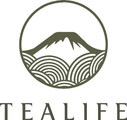June 2025 updates
Posted by Yuki on 8th Jun 2025
Some more news regarding Matcha Powder and intermediary markets
Our supply has also remained limited. As you know, we select only premium-grade Matcha for our products, and these are the Matcha that have been affected the most. We are currently out of stock (as of June 8th), but we anticipate another round of Matcha coming in within a few days.
Hojicha Powder
You can find it here. Houjicha Powder by Tealife
Hario Teapots
Japanese Tea Travelers Program for June
Kamairi-cha from Ureshino, Saga
Our Momiji tier members will receive the Kamairi-cha from Ureshino, Japan. Hand-pan-fired in small batches, Kamairi-cha is one of Japan’s oldest green teas, tracing its technique back to our Chinese cousins. The wok finish gives each curl a toasty, chestnut aroma that melts into a tasteful cup. Production grows rarer every year because the labor is intense, but that just makes each sip feel like holding a living museum piece.
Misty Crane Premium Grade Sencha, Kyoto
The second tea for our Sakura tier members is the Premium Grade Sencha from Kyoto. True to its name, this sencha rises with the elegance of a crane lifting off a morning pond—clean umami, bright sweetness, and a classy taste profile.
Just as a usual reminder, the Japanese Tea Travelers program is a loyalty program for our special customers at Tealife. Each month, we choose tea from different areas in Japan and include it in each order. This is free of charge as long as you're eligible and enrolled, which you are if you're receiving this email!
Random closing thoughts
As I've mentioned here and in past conversations on CNA radio and other media outlets, Matcha's supply chain lacks elasticity. Japan has a real opportunity if it can expand its capacity, but it seems to me that the road is steep. As a part of the inelastic nature of the supply chain, I was surprised to learn recently that converting a Sencha facility into a Tencha facility can require an investment of 300 million yen. The two are fundamentally different, and with most farmers already aging, the risk and cost of such transformation are daunting. This is an impossible investment for many of these farmers. Government subsidies exist, but they're not extensive enough to tip the scale. I feel the government should seize this opportunity and subsidize 80% of the investment. The banks can support the rest. If the government can provide assurance for the continuation of these tea farms' business, the IRR (internal rate of return) from taxes and foreign exports will be immense and well worth the investment. After all, Japanese Matcha is a product that can't be produced to this quality anywhere else. They were working so hard to increase the demand until a couple of years ago... now that the demand has exceeded the supply, it's silly that there's little support for improving the supply. Hopefully, Japan can rise to the challenge and offer more robust support.
On a more uplifting note, I've had several inspiring conversations with young people who reached out from Japan recently. One is exploring new applications for tea's beneficial compounds, and another is working on improving fair wages for tea farmers. It's energizing to see this kind of passion, and I look forward to helping in any way I can. I'm always open to these discussions - in both Japanese and English - so please reach out.
Lastly, I've been quietly working on a little project to reimagine how we enjoy Matcha—something fun and refreshing. I'll share more when the time is right.
Yuki @ Tealife



